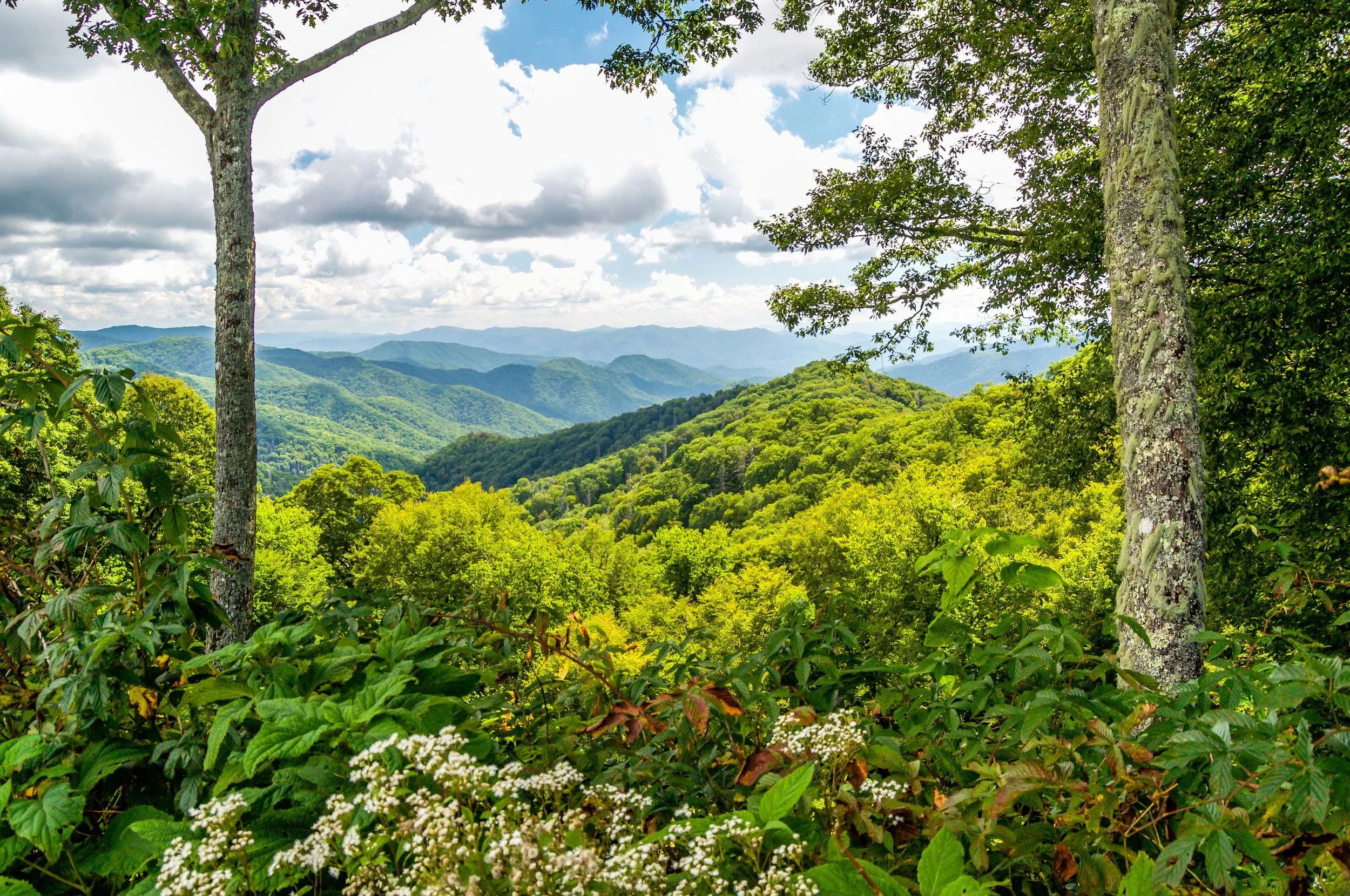Find Your Virginia Plant Community, Part 1!
Maybe you’ve heard the best way to provide habitat and build a sustainable “garden” is by utilizing native plant communities, or maybe you just want to know how to get started using native plants in your yard, and how to put them together. Whatever brought you here… welcome!
Disclaimer - I am not an ecologist. I am not a botanist. If you’re here, you probably aren’t either (if you are, you’re still welcome, just try not to be too judgy of the rest of us), so I’m going to walk you through the basic process I use to identify possible Virginia native plant communities for an area, assemble my list of desired plants for design/ installation, and show some basic design tips for pulling them together into a cohesive, intentional-looking landscape (where desired or required).
(You can also find a presentation recording that includes this information here.)
So what exactly is a native plant community?
From definition.net, “plant community” is defined as a collection of plant species within a designated geographical unit, which forms a relatively uniform patch, distinguishable from neighboring patches of different vegetation types. The components of each plant community are influenced by:
Soil
Topography
Climate
Human disturbance
It could also be argued that amongst native plant communities, there are specific ways that plants grow and communicate with each other over time, complementing and strengthening each other, and providing unique habitat to wildlife. Pretty great stuff. As native plants, they should also require less water and nutrient input from you when installed in the appropriate conditions for that specific plant community.
The Virginia Department of Conservation and Recreation (DCR) has put together “The Natural Communities of Virginia Classification of Ecological Groups and Community Types,” which includes 5 different systems, 14 ecological classes, 82 ecological groups and 308 community types (whew, that’s a lot to sift through…). You can find that resource here.
The best place to start with these is at the top, if you have any idea what type of “systems” may be in your area. For example, if you are at higher elevation and don’t have a lot of water around you, you may be looking at “terrestrial” upland systems. A freshwater river nearby? Maybe a “riverine system." Virginia Beach oceanfront? Possibly a “marine system.” Below are the systems listed in Virginia and their subsequent ecological classes, as defined by Virginia DCR. There are also sample photos of these communities available on their website.
If you, like me, are not an ecologist, and still find yourself a little confused, my next (imperfect) steps to finding a native plant community that will work for you are as follows-
Identify common native plants in your area (details below)
Try to find some of those plants in the DCR online pdf document (next blog)
Write down the communities that include those plants (next blog)
Look more closely at your selected communities to find the best match (next blog)
https://floraofvirginia.org/flora-app/
1. Identify common native plants in your area
There are many ways you can try to identify your local native plants. Depending on your level of comfort with technology, access to natural areas, and local resources, those may differ, but hopefully one of more of these will work for you!
Find your local extension office, and use them as a resource.
Find local experts like professional horticulturists or Master Gardeners.
Use plant guides, Flora of VA (The app has a “graphic key” where you can enter in information about your plant to narrow down possible species. It will also tell you whether a plant is actually considered native to your area), iNaturalist (Upload a photo of your plant and click on “What did you see? View suggestions” to get species recommendations, choose one, and let others confirm or correct your id.
Have fun identifying your local native plants! Leave comments with successes you have or other apps and resources you use to id plants (even in areas outside VA)!
Stay tuned for steps 2-4, as well as tips on designing with your local plant community in upcoming blog posts!











